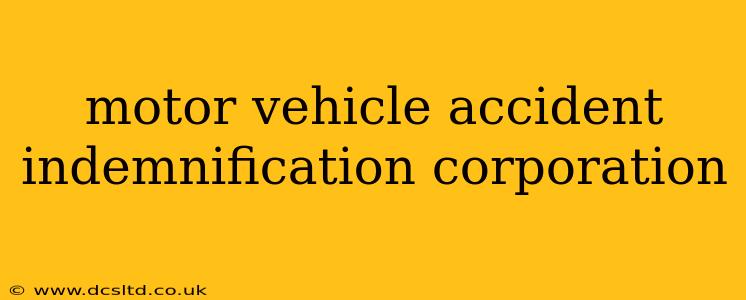The Motor Vehicle Accident Indemnification Corporation (MVAIC) is a crucial safety net for victims of motor vehicle accidents in certain jurisdictions. This article will delve into the intricacies of the MVAIC, explaining its purpose, how it works, and answering common questions surrounding its operation. Understanding the MVAIC can be vital for anyone involved in an accident, especially those dealing with uninsured or hit-and-run drivers.
What is the MVAIC?
The MVAIC is a quasi-governmental entity designed to compensate individuals injured in motor vehicle accidents caused by uninsured or hit-and-run drivers. It acts as a last resort, providing a level of protection when traditional insurance claims are impossible. The specific regulations and operations of the MVAIC can vary depending on the state or province, so it's crucial to understand the specifics of your region. Generally, the MVAIC is funded through assessments on insurance companies, ensuring that the burden is spread across the industry rather than falling solely on individual victims.
Who is Covered by the MVAIC?
Coverage under the MVAIC typically extends to individuals injured in accidents caused by uninsured or hit-and-run drivers. However, eligibility criteria can be stringent. For example, some MVAICs require the injured party to be a resident of the state or province, or to have been legally present in the vehicle at the time of the accident. Specific details regarding eligibility often include:
- The type of vehicle involved: The MVAIC usually covers accidents involving automobiles, motorcycles, and other similar vehicles.
- The nature of the injuries: The severity of the injuries sustained often plays a role in determining the amount of compensation.
- Compliance with reporting requirements: Timely reporting of the accident to the authorities and the MVAIC is generally a prerequisite for coverage.
It's crucial to consult the specific regulations of your jurisdiction's MVAIC for a complete understanding of eligibility requirements.
What Benefits Does the MVAIC Provide?
The benefits provided by the MVAIC vary significantly depending on the jurisdiction but generally cover medical expenses and lost wages resulting from the accident. Some MVAICs also offer coverage for pain and suffering, although the amount of compensation can be limited. These benefits are often capped at a certain maximum amount.
Important Note: The MVAIC is not a substitute for comprehensive insurance coverage. It's designed to provide a safety net, not to replace the more substantial compensation you might receive through a traditional insurance claim.
How to File a Claim with the MVAIC?
Filing a claim with the MVAIC typically involves providing extensive documentation, including a police report, medical records, and proof of lost wages. The process can be complex and time-consuming. Seeking legal counsel is often recommended to navigate the complexities of the MVAIC claim process effectively.
What if My Claim is Denied by the MVAIC?
If your claim is denied, you might have grounds to appeal the decision. The appeals process is also governed by specific regulations and can be highly involved. Again, seeking legal advice is strongly recommended to understand your options and rights.
What is the difference between the MVAIC and uninsured/underinsured motorist coverage?
Uninsured/underinsured motorist (UM/UIM) coverage is a type of insurance coverage you purchase separately to protect yourself in accidents caused by uninsured or underinsured drivers. The MVAIC, on the other hand, is a safety net provided by the state or province, acting as a last resort when traditional insurance claims are unavailable. Having UM/UIM coverage is highly recommended, as it typically provides faster and more comprehensive compensation than relying solely on the MVAIC.
How is the MVAIC funded?
The MVAIC is typically funded through assessments levied on insurance companies operating within the jurisdiction. This method distributes the cost of compensating victims of uninsured or hit-and-run drivers across the insurance industry.
This information is for general knowledge and informational purposes only, and does not constitute legal advice. It's vital to consult with legal professionals and the specific MVAIC in your jurisdiction for personalized guidance.
